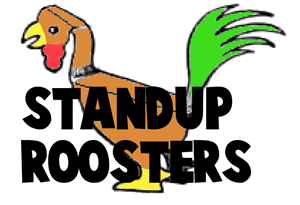A classic folk /science toy gets easy to make
I don't care if my ancestors were playing with this folk toy a century ago. It is as magical today. And it will be just as fascinating to future generations even if we harness nuclear fusion for power and interplanetary travel becomes routine. That's what "classic" means: timeless, immortal.
If you haven't crossed paths with a magic propeller stick (also known as a whimmy-doodle in Appalachia), you're in for a treat. You hold the stick in one hand and rub bumps on it with another. Mysteriously, the propeller spins fast... really fast. Some people can make it reverse direction at will.
There is some cool science going on here. In the "more about" page I will make the case that this propeller is closely related to such seemingly disparate subjects as hula-hoops and modern
industrial fasteners. This project lends itself to endless experimentation. Change the propeller shape? Sure! Make multiple propeller heads like a mythological Hydra? Go ahead and try it. I have a lot of fun when I make this project with groups of kids, seeing the creative variations they come up with.
Traditionally, people have whittled notches into a wooden stick with a pocket knife to create the bumps-- not a very safe elementary project. I offer this easy-to-make version that uses a coat hanger or other wire with a couple of wavy bends instead of the whittled notches.
HOW TO MAKE THE PROPELLER STICK
What you need:
WIRE: Any of the following work.
COAT HANGER: For a lot of people, this will be the only wire they have without having to go out and buy something. The thick ones can be a little hard to bend, so use the thinnest one you can find. You will need pliers to bend it again and again in the same place until it breaks. This is called metal "fatigue." You need about a 12" piece
.
UTILITY WIRE: Small, inexpensive rolls of solid steel, copper and aluminum wire are available from building centers and hardware stores. Thickness is denoted by a gauge number for maximum confusion. The bigger the gauge number, the thinner the wire is. Typically you will find utility wire that's around 20 gauge.
One strand of this wire is too flimsy, but doubling and twisting a double strand is perfect. Start with a 24" (2 foot) piece and fold it in half. Holding the two ends with
pliers, twist the wires together with a pencil or pen. The green lines indicate a break--only in the picture. It was getting too long to show the whole wire on the
ELECTRICAL WIRE: By this I mean the stiff, solid wire used inside the walls of houses not the flexible stuff used for appliance cords. If you know an electrician, ask if they have any scrap "Romex," any gauge. From that you can cut out three pieces of wire (black, white and bare). Use the bare one first, or strip off the last two inches of insulation where the propeller will spin. You need about a 12" piece.
ELECTRIC FENCE WIRE: I happen to have a roll lying around. Even doing this project with hundreds of kids a year, I've got a lifetime supply.






























